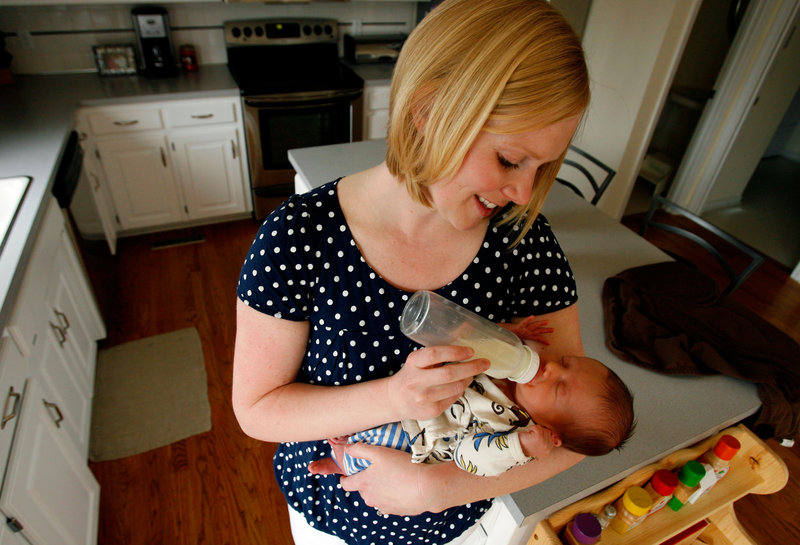PORTLAND – What are you feeding your children? Chances are good that if it comes out of a can, jar or pouch, you are feeding them bisphenol-A — commonly known as BPA.
BPA is a biologically active chemical used in numerous plastics, including those used in food and beverage containers, can liners, toys and a variety of household objects. Recent calculations estimate production at more than 8 billion pounds of BPA every year worldwide.
BPA was first synthesized in the late 1800s, and in the 1930s it was considered for commercial use as a synthetic version of the hormone estrogen. Its estrogenic activity was recognized at that time, but its production was abandoned in favor of another chemical with potent estrogenic activity, diethylstilbestrol, commonly known as DES.
Then in the 1940s and ’50s, the plastics industry found a use for BPA, and the rest, as they say, is history.
As a component of plastics, the bond that attaches BPA to its neighboring molecules is a weak one, and when exposed to high temperatures or acidic or basic substances, BPA readily leaches out of the plastic and into its surrounding elements.
When the plastic is food packaging, this leaching process makes BPA available for unintended ingestion. In fact, one of the most common paths of exposure to BPA is through food. Studies show that BPA exposure could be slashed by two-thirds if food packaging were BPA-free. (BPA has also been found in dust, groundwater and marine environments. )
A 2008 study by the U.S. Centers for Disease Control reinforced what numerous studies had previously concluded. BPA was found in the urine of 92.6 percent of the 2,500 participants studied, and levels were significantly higher in children.
Exposure even occurs in utero — BPA has been detected in urine, amniotic fluid, neonatal blood, placental tissue, umbilical cord blood and breast milk.
Remember BPA’s beginnings as a commercial estrogen? BPA is what is referred to as an “endocrine disruptor” — it can bind to receptors in the body that are intended to link to estrogen. As a result, BPA has the ability to disrupt the normal functioning of the endocrine system, and this can lead to a variety of serious health effects.
In rodent and non-human primate studies, BPA has been shown to affect brain development, growth of breast and prostate glands, reproductive capacity in both males and females, and the immune system. The effects of BPA on all of these organ systems are worse if the exposure occurs in the womb or in early childhood. More recently, studies have suggested that BPA plays a role in obesity.
It is not surprising that there is mounting evidence and growing concern in the medical and scientific communities about the broad-reaching effects of BPA.
We don’t know as much as we need to know about the effects of BPA on humans, but this is precisely why we should be cautious. We know that the chemical has numerous effects on the body, and we know that we are being exposed, which is why we can’t afford to wait before taking action.
In 2010, the state of Maine was successful in eliminating the use of BPA in baby bottles and sippy cups. In 2011, infant formula manufacturers were proactive and virtually eliminated BPA in formula containers.
Numerous other states have imposed restrictions on BPA in various products, and companies are beginning both to comply with new limits and also to voluntarily remove BPA from their products. While it is just a beginning, it is an important step in reducing the exposure to BPA — especially in our young and more vulnerable populations.
On June 21, Maine parents delivered more than 800 signatures and a compendium of scientific evidence to the Maine Board of Environmental Protection, petitioning the board to use its existing authority under Maine law to replace BPA with safer alternatives in containers of food marketed to children under the age of 3.
If the board develops such a rule, it will be brought in front of the Legislature in 2013. We as parents, physicians and engaged citizens must watch closely to ensure that the initiative receives due attention, and that we continue to work toward increased safety for the children of Maine.
Dr. Rosamund Davis is a resident pediatrician and mother in Portland.
Send questions/comments to the editors.



Success. Please wait for the page to reload. If the page does not reload within 5 seconds, please refresh the page.
Enter your email and password to access comments.
Hi, to comment on stories you must . This profile is in addition to your subscription and website login.
Already have a commenting profile? .
Invalid username/password.
Please check your email to confirm and complete your registration.
Only subscribers are eligible to post comments. Please subscribe or login first for digital access. Here’s why.
Use the form below to reset your password. When you've submitted your account email, we will send an email with a reset code.